Sometimes a geologist will compare a mountain belt to a living organism. Just like organisms, mountain belts are dynamic systems that experience life cycles. Mountains go through a fragile infancy, a youth filled with rapid growth, a commanding adulthood, and an eventual decay into old age. Sometimes though, the entrance into old age is not accomplished by slow decay but by violently tearing apart the high topography of adulthood built by convergent forces. In a few places, like the Apennine mountains of Italy, one can witness the juxtaposition of these two life cycles. In the Apennines, the mountains are simultaneously being built and torn apart, the birth and death of of the mountains stand together to create the modern landscape.
The story of the Apennines (the mountains that run roughly north-south down the entire country, creating the backbone of the peninsula) must be told in two parts. In part 1 I will take you to where the mountains are currently being built and in part 2 I will take you to where they are being destroyed.
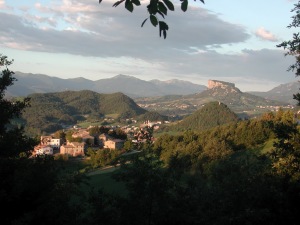 |
|
The Emilian Apennines near in the province of Reggio nell’ Emilia. Photo from Wikipedia commons.
|
The Apennines were formed by the subduction of the Adria microplate and are one of the results of the largert African-European collision.
Much of the Apennines consist of oceanic crust and the overlying sediments that were scraped off the down-going slab during subduction. Here is an example of some oceanic pillow basalts exposed in the famous Ligurian lid, which is a large structural lid overlying much of the Apennines.
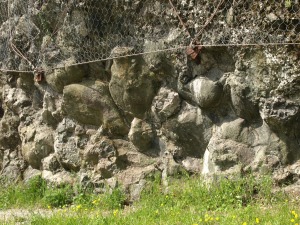 |
| Ligurian Pillow Basalts |
The Apennines spent most of their life underwater. Thick sections of turbidite sandstones shed off the growing Alpine belt were deposited in front of the Apennines before they were incorporated into the mountains themselves.
 |
| Apennine Turbidites |
One of the most unbelievable aspects of the story of the Apennines is the so-called “Messinian Salinity Crisis”. Around 6 Million years ago, the Mediterranean sea dried up causing rapid deposition of thick layers of evaporites. This Messinian deposit is composed of large gypsum crystals.
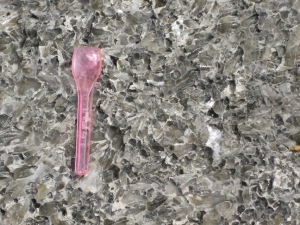 |
| Messinian gypsum. Gelato spoon is shown for scale |
After the Messinian Salinity Crisis the water quickly came back, once again flooding the front of the Apennines. Deep water muds deposited during this time, however, still show evidence of tectonic activity. Here you can see a mineralized methane vent. These vents formed from methane expulsion caused by the deformation of the rocks far below.
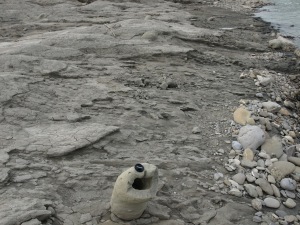 |
| Methane Vents |
Eventually the Apennines became large enough to finally peek out of the sea. Here we can see a one million year old beach deposit that has been uplifted above sea level and tilted to the North. From this time onwards, the entire mountain range was exposed above sea level.
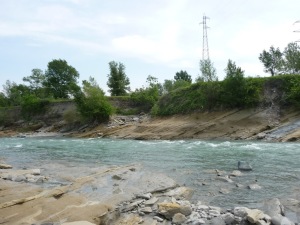 |
| Uplifted beach deposit |
The Apennine mountain front is still being uplifted today. This is best observed by river deposits that are uplifted above the current river position (tan rocks below). As the mountains continue to uplift, the rivers carve down into the bedrock and abandon the older river deposits. We use these deposits to determine how fast the mountains have been uplifting over the last one million years.
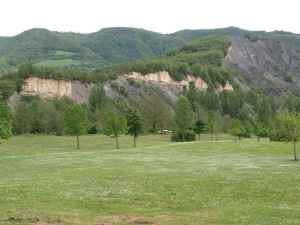 |
| Uplifted river deposits |
You cannot escape the influence of history when you work in Italy. Everywhere you see the influences of past peoples, from Etruscan to Roman, to Medieval to Renaissance. I walked past this 9th century church every day on my way to my field site for 2 months.
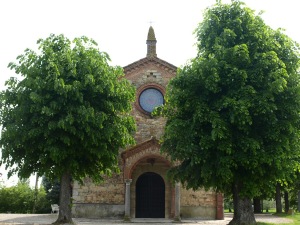 |
| 1000 year old church |
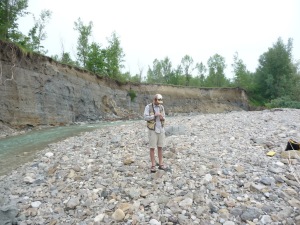 |
| Kellen Gunderson doing geology in the Apennines |
![]() This work is licensed under a Creative Commons Attribution-NonCommercial-ShareAlike 4.0 International License.
This work is licensed under a Creative Commons Attribution-NonCommercial-ShareAlike 4.0 International License.
